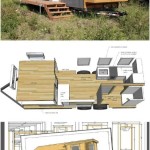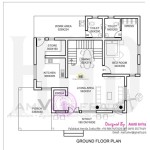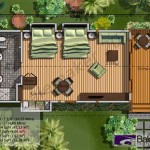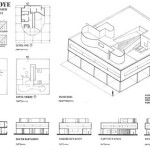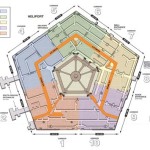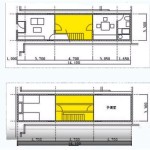Small Living Room Open Floor Plan: Maximizing Space and Style
The open floor plan has become a popular design choice in modern homes, prized for its ability to create a sense of spaciousness and flow. This is particularly advantageous in smaller homes or apartments where every square foot counts. A well-designed small living room open floor plan can transform a cramped and cluttered area into a functional and inviting space by strategically blending the living area with adjacent zones, such as the kitchen or dining area. This article will explore the key considerations and design strategies for creating a successful small living room open floor plan.
The open floor plan concept involves removing or minimizing walls between the living room and other rooms, fostering a visual and physical connection. This design approach allows for better natural light distribution, improved traffic flow, and enhanced social interaction. However, designing an effective open floor plan in a small living room requires careful planning to avoid creating a chaotic or undefined space. It is crucial to consider factors such as furniture placement, zoning techniques, color schemes, and storage solutions to achieve a balanced and harmonious environment.
Defining Zones within a Small Open Space
One of the primary challenges in a small living room open floor plan is defining distinct zones without the use of physical walls. This can be achieved through various design techniques that visually separate the living area from the adjacent spaces. The goal is to create a cohesive yet differentiated environment where each zone serves its intended purpose effectively.
Furniture Placement:
The strategic arrangement of furniture is a powerful tool for defining zones. A large sectional sofa, for example, can act as a natural divider between the living room and the dining area. Similarly, a strategically placed console table or bookshelf can delineate the living room from the entryway or a hallway. The key is to position furniture in a way that creates a visual boundary without completely obstructing the flow of movement.Area Rugs:
Area rugs are another effective method for defining specific zones within the open floor plan. A large rug placed under the main seating area in the living room can create a sense of enclosure and define the boundaries of that space. Different rugs can be used in different zones to further emphasize the distinction between areas. For example, a plush rug can be used in the living room to create a cozy and inviting atmosphere, while a more durable rug can be used in the dining area to withstand spills and foot traffic. Consider the size and shape of the rug in relation to the furniture and the overall space to ensure a balanced and visually appealing result.Changes in Flooring:
A subtle change in flooring can also help to define zones. For instance, transitioning from hardwood flooring in the living room to tile flooring in the kitchen can create a clear visual separation. Alternatively, different colors or patterns of the same flooring material can be used to achieve a similar effect. This approach can be particularly effective in creating a more subtle distinction between zones without disrupting the overall aesthetic of the open floor plan.Lighting:
Lighting plays a pivotal role in defining the mood and function of different zones. Warm, ambient lighting can be used in the living room to create a relaxing atmosphere, while brighter, task-oriented lighting can be used in the kitchen for food preparation. Using a combination of different light sources, such as overhead lighting, floor lamps, and table lamps, can help to create layers of light and define specific areas within the open floor plan. Dimmers can also be installed to adjust the lighting levels according to the time of day and the activity being performed.Architectural Elements:
Even in the absence of full walls, subtle architectural elements can contribute to zone definition. A partial wall or pony wall can create a visual barrier without completely closing off the space. Similarly, a decorative screen or a suspended shelving unit can provide a sense of separation while still allowing light and air to flow through. These elements can add visual interest and depth to the open floor plan.Maximizing Storage Solutions in a Small Open Living Room
Effective storage is essential in any small space, and it becomes even more important in an open floor plan where clutter can easily disrupt the overall aesthetic. Incorporating smart storage solutions can help to keep the living room organized and visually appealing, while also maximizing the use of available space.
Multifunctional Furniture:
Investing in multifunctional furniture is a practical way to save space and increase storage capacity. A coffee table with built-in drawers or a lift-top coffee table can provide hidden storage for books, magazines, and other items. Similarly, an ottoman with storage can be used to store blankets, pillows, or toys. These pieces can seamlessly blend storage with functionality, making them ideal for small living rooms.Vertical Storage:
Utilize vertical space to maximize storage opportunities. Tall bookshelves can provide ample storage for books, decorative items, and other belongings. Floating shelves can be installed on walls to create additional storage without taking up valuable floor space. These shelves can be used to display artwork, plants, or other decorative items. When selecting vertical storage solutions, consider the overall style of the living room and choose pieces that complement the existing decor.Built-in Storage:
If possible, consider incorporating built-in storage solutions into the design of the open floor plan. Built-in cabinets, shelves, or drawers can be seamlessly integrated into the walls, providing a customized storage solution that maximizes every inch of available space. This is particularly effective in areas around the fireplace or along walls that would otherwise be unused. Built-in storage can be designed to match the existing architecture and create a cohesive look throughout the living room.Baskets and Bins:
Baskets and bins are versatile storage solutions that can be used to organize a variety of items. Woven baskets can be used to store blankets, pillows, or toys in an aesthetically pleasing way. Clear plastic bins can be used to store smaller items, such as craft supplies or electronic accessories, and can be easily stacked and stored in closets or under furniture. Labeling baskets and bins can help to keep everything organized and easily accessible.Hidden Storage:
Think creatively about incorporating hidden storage solutions into the living room. A hollowed-out bench or window seat can provide a discreet storage space for seasonal items or less frequently used belongings. False drawers or cabinets can be installed to conceal electrical wiring or other unsightly elements. By incorporating hidden storage, it is possible to maximize storage capacity without compromising the aesthetic of the living room.Color Palette and Lighting for a Cohesive Look
The color palette and lighting choices play a significant role in creating a cohesive and inviting atmosphere in a small living room open floor plan. Coordinated colors and strategically placed lighting can enhance the sense of spaciousness, create a harmonious flow between zones, and reflect personal style.
Color Harmony:
Choose a color palette that unifies the open floor plan. While different zones can feature variations in color, it is important to maintain a sense of harmony throughout the space. Using a limited color palette, with variations in shades and tones, can create a cohesive and visually appealing environment. Neutral colors, such as white, gray, and beige, are often a good choice for small spaces as they can create a sense of openness and airiness. Accent colors can be used to add pops of interest and personality to the living room.Light and Bright:
Maximize natural light to make the small living room feel larger and more inviting. Keep windows uncovered or use lightweight curtains that allow natural light to filter through. Paint walls in light colors to reflect natural light and brighten the space. If natural light is limited, supplement it with artificial lighting. Use a combination of overhead lighting, floor lamps, and table lamps to create layers of light and illuminate different areas of the room.Strategic Color Placement:
Use color strategically to define zones and create visual interest. For example, an accent wall in a bold color can be used to define the living room seating area. Alternatively, a different color can be used on the walls in the dining area to differentiate it from the living room. Using color to define different zones can help to create a sense of separation without disrupting the overall flow of the open floor plan.Reflective Surfaces:
Incorporate reflective surfaces, such as mirrors and glossy finishes, to enhance the sense of spaciousness and light in the living room. Mirrors can be strategically placed to reflect natural light and create the illusion of a larger space. Glossy finishes on furniture or accessories can also help to reflect light and add a touch of elegance to the room. These elements can contribute to a brighter and more open atmosphere.Layered Lighting:
Create a layered lighting scheme that incorporates different types of lighting to suit different moods and activities. Ambient lighting, such as overhead lighting or sconces, provides general illumination for the room. Task lighting, such as table lamps or floor lamps, provides focused light for specific tasks, such as reading or working. Accent lighting, such as spotlights or picture lights, highlights specific features or artwork in the room. By layering different types of lighting, it is possible to create a versatile and functional lighting scheme that enhances the overall atmosphere of the living room.By implementing these design strategies, a small living room open floor plan can be transformed into a stylish, functional, and inviting space, demonstrating that even limited square footage can offer both comfort and visual appeal.

How To Decorate Your Open Floor Plan Like A Pro Interior Design Home Staging Jacksonville Fl Interiors Revitalized

18 Great Room Ideas Open Floor Plan Decorating Tips

Pros And Cons Of Open Concept Floor Plans

3 Small Open Layout Decor Tips And 23 Ideas Digsdigs

Pin On Decorating
:strip_icc()/open-floor-plan-design-ideas-13-proem-studio-white-oak-3-57715775317c4b2abc88a4cefa6f06b7.jpeg?strip=all)
22 Open Floor Plan Decorating Ideas Straight From Designers

3 Small Open Layout Decor Tips And 23 Ideas Digsdigs

3 Small Open Layout Decor Tips And 23 Ideas Digsdigs

12 Open Floor Plan Ideas To Steal Mymove

How To Arrange Furniture With An Open Concept Floor Plan Setting For Four Interiors

